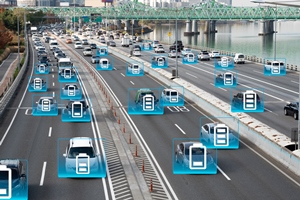Public perception: Why concerns about charging are blocking EV adoption

Pilgrim Beart of DevicePilot
Electric vehicles (EVs), and the infrastructure which charges them, are connected devices deployed at exponentially increasing scale, says Pilgrim Beart, co-founder and CEO of DevicePilot.
2020 has been a good year for EV sales in the UK. In April and May, Tesla’s Model 3 was the best-selling car, and recent research by Society of Motor Manufacturers and Traders has shown that EV sales in September were up 184% on last year. However, the UK is often reported to be lagging behind its European neighbours when it comes to EV sales.
We wanted to investigate why the British public seems reluctant to open adopt EVs at scale, so we commissioned independent research to understand public perception of EVs. Unsurprisingly, many of the top-ranking blockers to EV adoption are related to the charging experience.
Charging points are relatively new and complex connected devices which can go wrong in many ways, and historically haven’t had a great reputation for reliability or availability., It’s easy for providers to lose track of what is happening on these devices and let customer service slip – so is this responsible for the poor perception of charging, and for slow EV uptake?
What is the public telling us?
According to the data, the number one blocker to EV adoption is having to plan long journeys, which is a concern to 91% of Brits. This is essentially an issue of availability. If you drive a petrol car, you know that a full tank of petrol will get you a certain distance, and that along the way there will be plenty of petrol stations where you can top up your power supply in a matter of seconds. The same can’t be said for EVs, with most struggling to complete a 250-mile journey on a single charge, whilst opportunities to top up your power are much more sparse and it takes considerably longer than refuelling a petrol car.

There are two factors at play on this equation. Firstly, you have to have an ample number of chargers installed, which is a cause for concern for 90% of the public. The second is one of reliability – there is no point in having enough charging points if they are regularly offline – which was a concern to 81% of UK residents. When’s the last time you went to refuel your petrol car and discovered that the petrol station was broken? Recent Zap Map data has revealed that 5.8% of charging points across the country are down at any one time, which is appallingly high but not uncommon in the early days of an Internet of Things (IoT) rollout in its early stages. However, this shows that public perception is mirrored by reality.
Amongst other high-ranking factors is the cost of an electric vehicle, which puts 90% of Brits off buying one, but which we will see drop over time as EVs become more commonplace. Meanwhile, factors like the look of electric vehicles (41%) and not liking the sound of an EV (42%) were the lowest ranking concerns.
Why service monitoring is the answer
Charging point vendors will have done their homework – they know not to put a lot of charging points in an area where there are very few EVs. However, once deployed, the realities of usage are impossible to predict and the only answer is to monitor these connected devices to both understand patterns of use, and causes of unavailability
By deploying Service Monitoring technology, you can keep an eye on your entire estate of devices, enabling you to proactively measure metrics such as uptime and usage, automate business processes to respond to problems and deliver excellent availability, and inform decisions about whether you have too few or too many devices in an area.
This solves many of the issues identified by our public polling. If you can make sure there is always – or at least regularly – a minimum of one charging point available-and-working per bank of devices, you will have much happier customers. They won’t have to worry about charging their car or planning journeys, as there should always be a charging point available at regular intervals along the way.
Charging point vendors must make more of an effort to deliver a better service, especially when it comes to keeping devices online – that number of 5.8% being down is far too high and must be reduced. As with many connected devices, without Service Monitoring, EVs will struggle to cross the chasm into mainstream market, as those negative perceptions of charging points being unreliable will continue to put people off.
The author is Pilgrim Beart, co-founder and CEO of DevicePilot.
Comment on this article below or via Twitter @IoTGN
